Primary Pollinators
Bees are an amazingly large group of pollinator insects with 16,000+ species placed under seven families. Some of the well-reported bee species from around the world are various species of honey bees (Indian, European and African species are well known), bumble bees, leaf-cutter bees, sweat bees, blue-banded bees, cuckoo bees, blue bees, mining bees, stingless bees, carpenter bees, sugar bag bees, mason bees to mention only a handful. Bees are one of the most important natural (biological) pollinator species and are responsible for achieving the bulk of the cross-pollination of flowering plants across the planet.

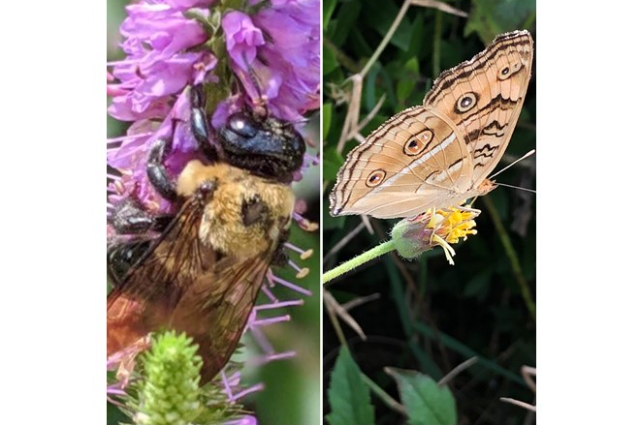
Photo credit: Saikat Kumar Basu
Over 85% of flowering plants are now reported to be cross-pollinated by natural pollinators. These include a large number of our food, fodder, forage, and industrial or chemurgic crops, several vegetables, fruit trees, forest trees, ornamental plants, native wild flowers, and weeds. Thus bees are important for three major global industries like agriculture, forestry, and apiculture (bee keeping). Without bees, a vast majority of sexually reproducing flowering plants and/or crops will become extinct resulting in destabilization of our natural ecosystems, food crisis threatening global food security, and catastrophic levels of unemployment around the planet. Hence, we now need to think about bees from a different perspective than looking at them as simple insects or pollinators. Bees help both our ecology and economy to walk hand in hand; are a vital resource for human survival on this planet. Bees have been associated with almost all human civilizations across the planet from time immemorial.




Photo credit: Saikat Kumar Basu
Secondary Pollinators
The global research focuses on natural (biological) pollinators that have historically developed mainly around insects like bees. However, it is important to remember that other insect species such as moths and butterflies; and several species of flies (like hover flies, drone flies, etc), wasps, and beetles also contribute significantly towards the cross-pollination of numerous plant species around the globe. The second group of natural (biological) pollinators has been mainly different species of birds such as different species of hummingbirds, flower peckers, sunbirds, parakeets, etc to mention only a few; and mammals like various bat species. However, recently with the advancement of science and technology; scientists and researchers have been exploring other possible natural pollinators beyond insects, birds, and bats.

Photo credit: Saurav Ghosh
Their findings indicated that several other animal species found in unique ecosystems and habitats like isolated tropical and subtropical forests or remote oceanic islands have supported the evolution of highly specialized and adaptive natural pollinators beyond these well-known species discussed above. Some species of lizards as well as some other mammals like primates (monkeys) and mongoose have also been reported to be efficient pollinators. A Mexican research group has even established through their laboratory experiments reverberating marine ecosystem that sea grasses use a wide number of marine invertebrates (like crustaceans and oligochates) for transferring pollen grains from the flower of one plant to another to achieve successful cross-pollination. Specific species of snails, slugs, and even some species of fungi have now been reported to be efficient pollinators.

Several mall mammalian species rodents serve as secondary pollinators.
Photo credit: Saikat Kumar BasuHence, to my mind, the real field of pollinators is quite large beyond our comprehension and imagination. Based on my long field observations I would even suggest spiders be good pollinators; but not as efficient as bees and other insects. Animals such as predatory insects, tree frogs, small lizards and snakes, very small rodents, and other species often take shelter in flowers specific species of plants with which they have co-evolved. The reason for this is to hide from predators themselves and to predate mainly in various pollinator insects that visit those flowers as easy picks.

Photo credit: Rahul Ray
These animals then move slowly from one flower to another of the same plant or a different adjoining plant in search of their target preys. In this process, they brush against the flower and hence enter thereby collecting pollen grains on their body. When they visit another flower the chance to deposit the pollen grains collected from the anthers to the stigma facilitates reproduction in plants. Hence, even small rodents that put their mouths or tongue inside a flower for licking on the nectaries have a high possibility of getting pollen dusted on their body hairs on the head region. When they visit another flower for the same purpose they could easily contribute towards cross-pollination.


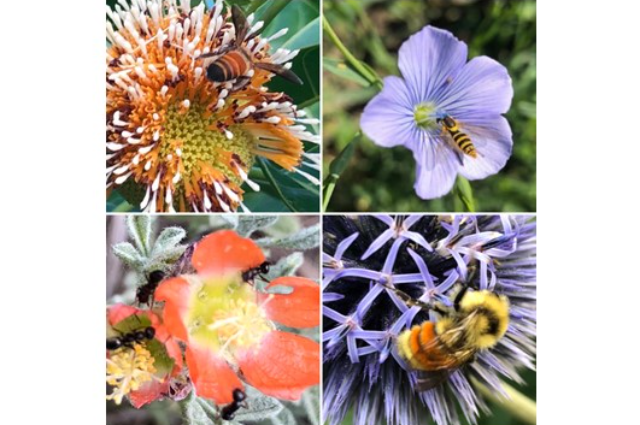
Secondary pollinators like bats, birds, and small mammals are often not given their due biological importance in pollination biology research compared to their insect counterparts (primary pollinators such as bees, moths and butterflies, ants, wasps, beetles, flies, etc) mostly due to our ignorance and lack of awareness.
There is a high probability that they will accidentally deposit some of the pollen grains into that other flower helping in pollination. However to scientifically prove this it will need tedious field and laboratory work to determine whether the pollen transferred from one plant by this non-conventional group of animals has facilitated fertilization in the other plants through cross-pollination. Once this is approved and documented appropriately and published; then we will be safe be able to suggest with this particular species is also involved in some percentage of cross-pollination in its natural ecosystem. It is amazing to note that insects like mosquitoes also contribute to pollination.
Although not reported in the literature, my personal observation has been that many of the small tiny tree frogs that hop from flower to flower in high canopy looking for insects could also contribute towards pollination. Several pollinator insects that visit flowers in search of nectaries and pollens are hunted by these tiny frogs. By moving from one flower to another it is quite possible that they also help in pollination since they have sticky skin covered with mucilage to which most likely pollen grains can easily get attached and then transported from one flower to another helping in cross-pollination. High canopy epiphytes like orchids, bromeliads offer protection to several small animals from other predators. In turn, these small animals help in pollinating their flowers while foraging for their insect prey. These details need to be recorded and published and could help us in better understanding the relationship between plants and their natural pollinators from a different perspective. Small arboreal tree frogs are important candidates for high canopy pollination as secondary pollinators.
Need for bee/pollinator conservation
Bees around the planet are facing an alarming decrease in their population due to excess use of toxic pesticides in agriculture, pollution, change in land-use patterns, industrial agriculture, mono-cropping, increase in highly resistant parasitic diseases, Colony Collapse Disorder (CCD), low immunity, lack of suitable forage crops to help them sustain throughout the growing seasons. Thus it is quite necessary to look for sustainable agricultural practices to help protect our vulnerable bees.
Sustainable solutions for effective bee conservation
One of the simple approaches that we have been working on has been establishing natural pollinator gardens using highly specialized mixes of the annual, biennial, and perennial local crops, ornamentals, and native wildflowers with various flowering cycles to extend the bee foraging periods. Our experiment has been greatly helped by establishing such patches in open spaces in rural and urban areas, city parks, gardens, lawns, boulevards, golf courses, adjacent water bodies, along with shelter belts, farm perimeters, agronomically unsuitable areas, hard to reach parts of farms, etc. This approach is low cost and low maintenance has been helping bees also enrich local biodiversity.
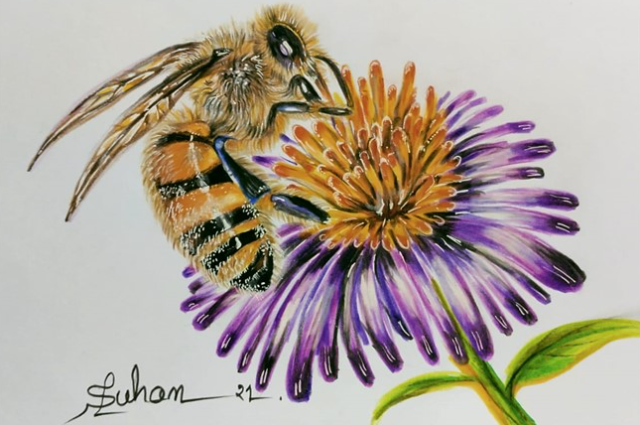

Sketch by Suhan Mandal
One can easily try growing alfalfa, sainfoin, industrial hemp, flax, coneflowers, different vetches, clovers, and sweet clovers, different perennial sunflower cultivars both short and long types, phlox, peony, chamomile, phacelia, different poppies, ox-eye daisy, lupine, cardinal flower, meadows vetchling, field scabious, meadow cranesbill, lavender, mint, holy basil, butterfly blue, borage, bellflower, globe thistle, hyssop, Indian paintbrush, coneflower, black-eyed Susan, brown-eyed Susan, coreopsis, bee balm, catchfly, blanket flower, lady’s bedstraw, Forgeme not, Toadflax, Queen Anne’s lace, wild buckwheat; they look fabulous and attracts small passerine birds, different species of bees, moths, and butterflies, wasps, flies and beetles in huge numbers.


Sketch by Suhan Mandal
We have been researching the use of native wildflowers and crop mixes at different locations termed Pollinator Sanctuaries and the results have been highly encouraging. Industrial hemp, alfalfa, sainfoin, clovers, and sweet clovers seeds are easily available in any abandoned area in the locality. These are volunteer crops that have run away from fields and grown well with little or no care. You will be amazed to see how these cheaply available crop plants change your backyard with beautiful color and buzz of bees, twittering of birds, and flattery of butterflies. You can also get seed mixes as Pollinator Mixes in the local nurseries too. Phacelia will amaze you as to how many bees just flock on them. Persian clover is also very good and forms a carpet ground cover protecting soil and attracting bees throughout the growing season.
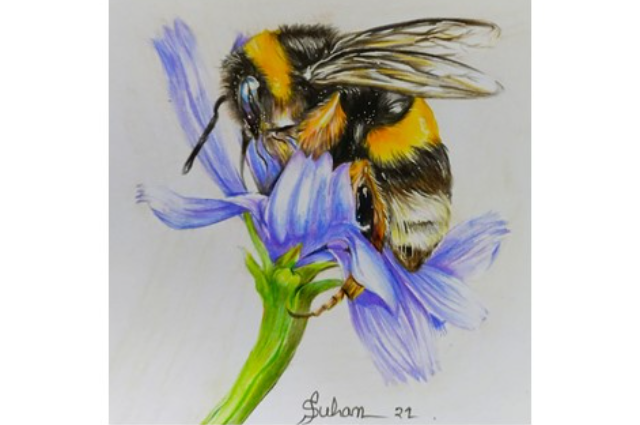
Sketch by Suhan Mandal
Alfalfa, clovers, sweet clovers, sainfoin has an excellent ground cover too, protecting the soil and attracting pollinator insects in very large numbers. Phacelia grows late into the season as late as October in colder countries. Another exceptional hardy species for cold climate areas is red clover. They do not flower as profusely as the other species mentioned; but, they can flower till the end of October to early November extending the bee foraging period in colder agri-ecosystems. White and yellow blossom sweet clovers are also very good and hardy and can flower till it starts to snow. But for colder climates I have found after extensive work that common yarrow works out exceedingly well for bees and being a hardy plant requires very little support once established. For warmer countries, the good news is that crop production can be continued throughout the year due to favourable climate conditions. Hence, they have an advantage in the conservation of politicians insects better compared to colder countries.
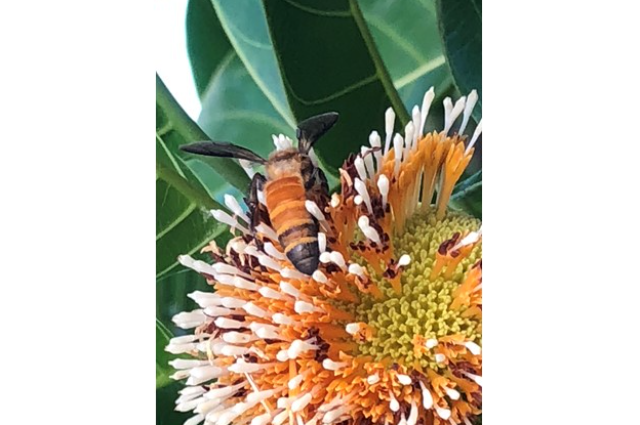

Without the aid of natural pollinators like bees, agriculture has very little chance to thrive on its own
Photo credit: Saikat Kumar BasuConclusions
Nonetheless, bee (pollinator) conservation is an important issue that needs to be dealt with in both hemispheres, cooler and warmer countries equally with their unique challenges. We need to learn from one another regarding the successful conservation of essential pollinators of our natural ecosystem. It is important for us to realize that we need to walk towards building a common platform to facilitate the formulation of successful bee conservation strategies for individual countries facing challenges with their bee populations.

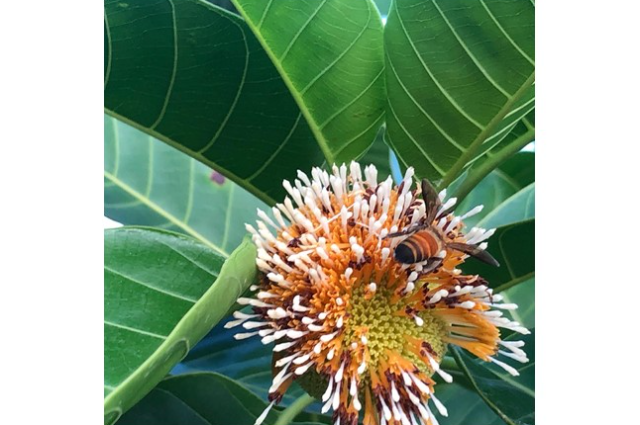
Photo credit: Saikat Kumar Basu
